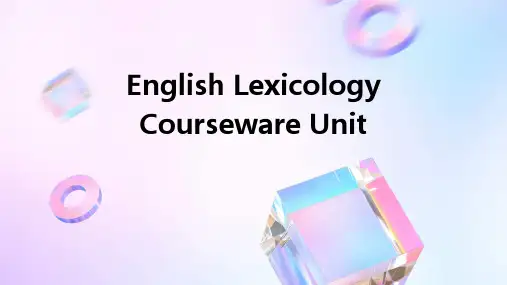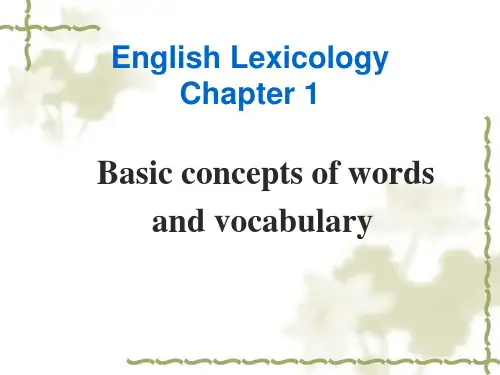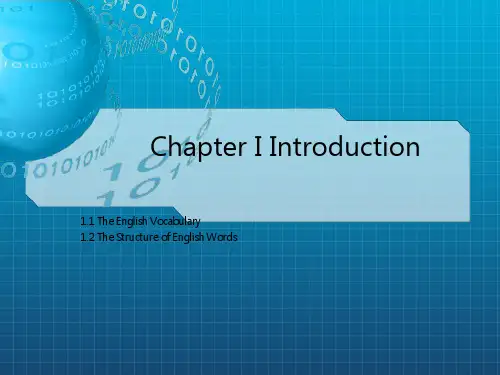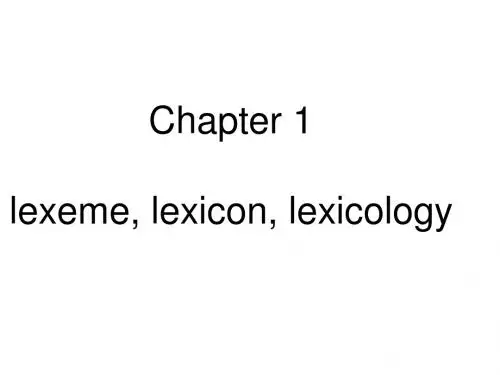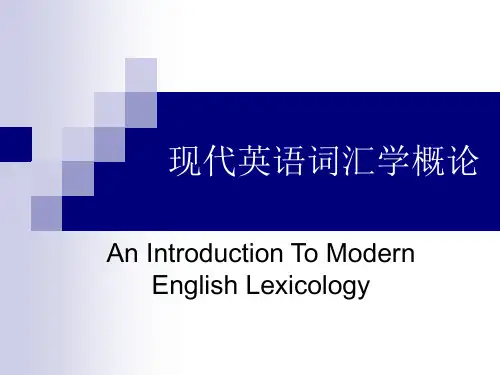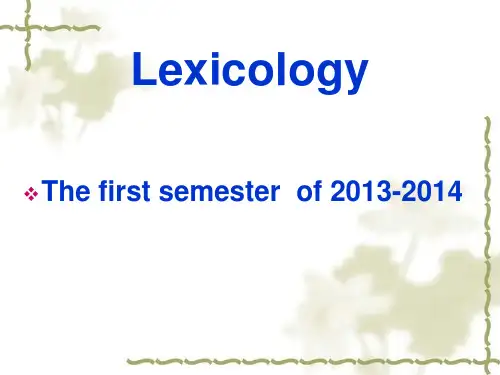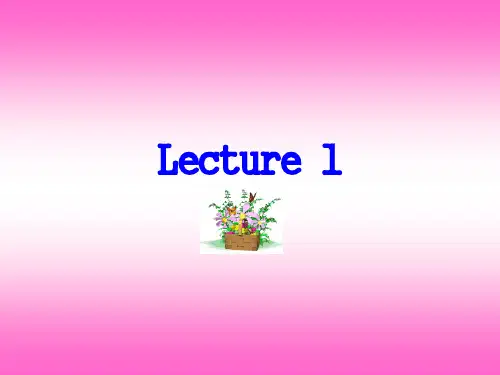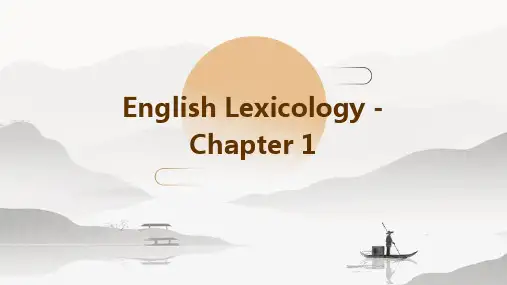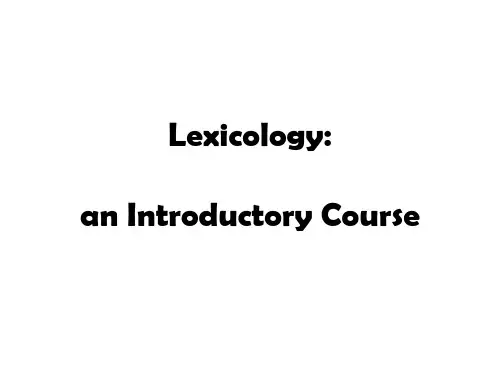- 1、下载文档前请自行甄别文档内容的完整性,平台不提供额外的编辑、内容补充、找答案等附加服务。
- 2、"仅部分预览"的文档,不可在线预览部分如存在完整性等问题,可反馈申请退款(可完整预览的文档不适用该条件!)。
- 3、如文档侵犯您的权益,请联系客服反馈,我们会尽快为您处理(人工客服工作时间:9:00-18:30)。
Etymology is the study of the whole history of words.
Etymological studies face several difficulties.
First, some words are not etymologically related to ancient forms. It is therefore difficult to establish and indicate their origins. Consequently, the forms from which such words are said to derive can only be produced by analogy.
Lexicographical compilation is derived from lexicological theory.
Dictionaries hers with linguistic knowledge.
People consider lexicography as applied lexicology.
Third, there can be no ‘true’ or original meaning, since human language stretches too far back in history.
When speakers cannot analyze an obscure form, they use ‘folk etymology’ to replace it with a different form which is morphologically transparent.
Word is a complex phenomenon in our daily life. If we want to study words, we shall have to look at words from different perspectives.
Morphology
Lexicology is closely related to morphology, semantics and etymology, because these fields also deal with words.
Morphology is the study of the forms of words and their components. In morphology, morpheme is a basic concept. The major purpose of study in morphology is to look at morphemes and their arrangements in word formation.
a new waste paper basket
The second type of definition considers the word as a thought unit or a psychological unit.
Farmer Rethink Spoonful all of a sudden as usual.
Linguistic semantics involves all aspects of meaning in natural languages, from the meaning of complex utterances in specific context to that of individual sounds in syllables.
Bug, boy, through, build, -er, dip, stick, -s, read and -ing are all morphemes.
Bug, boy, through, build, dip, stick and read are simple words while –er, -s and ing are only parts of words.
As semantics covers all aspects of human language, meaning should be studied by detailed analyses of the way words and sentences are used in specific context.
Lexicography involves the writing and compilation of dictionaries, especially dealing with the principles that underlie the process of compiling and editing dictionaries.
Linguists have traditionally depended on the written word as primary source material for defining the essential meanings of words.
Some linguists insist that the study of spoken word is more important than the study of the written.
In fact, a number of factors are involved in the use of words.
We should approach meaning in relation not only to lexicology, but also to phonology, syntax, pragmatics, sociolinguistics, psycolinguistics, cognitive linguistics and text analysis.
English Lexicology
Lecture One
What is Lexicology?
The notion of ‘word’ is central in the study of lexicology.
However, ‘word’ is used traditionally to refer to a sequence of letters bounded by spaces. Apart from word, people use the words ‘vocabulary’, ‘lexis’, and ‘lexicon’, but these items may be considered “more or less synonymous”.
Example of folk etymology:
For the verb depart, its initial use was restricted to wedding ceremonies to mean ‘separate’ in the expression ‘till death do us depart’. Later, the verb became obsolete and was analyzed as do and part, hence the corresponding Modern English expression ‘till death do us part’.
Second, while it is possible to specify the exact time when some terms entered the language, it is clearly impossible to say exactly when a form was dropped, since words can disappear from use for various reasons.
There are three types of definitions.
The first type of definition relies mainly on writing traditions that separate by spaces sequences of letters or characters.
Semantics
Semantics studies meaning. It is usually approached from one of two perspectives: philosophical or linguistic.
Philosophical semantics is concerned with the logical properties of language, the nature of formal theories, and the language of logic.
Many people tend to think of the word in visual terms, that is, as a meaningful group of letters printed or written horizontally across a piece of paper.
Notice the following items: bug, boy, through, builder, dipsticks, reading.
bug, boy and through cannot be divided further into meaningful units.
builder, dipsticks and reading can be analysed as ‘build + er’, ‘dip + stick + s’, and 'read + ing'.
